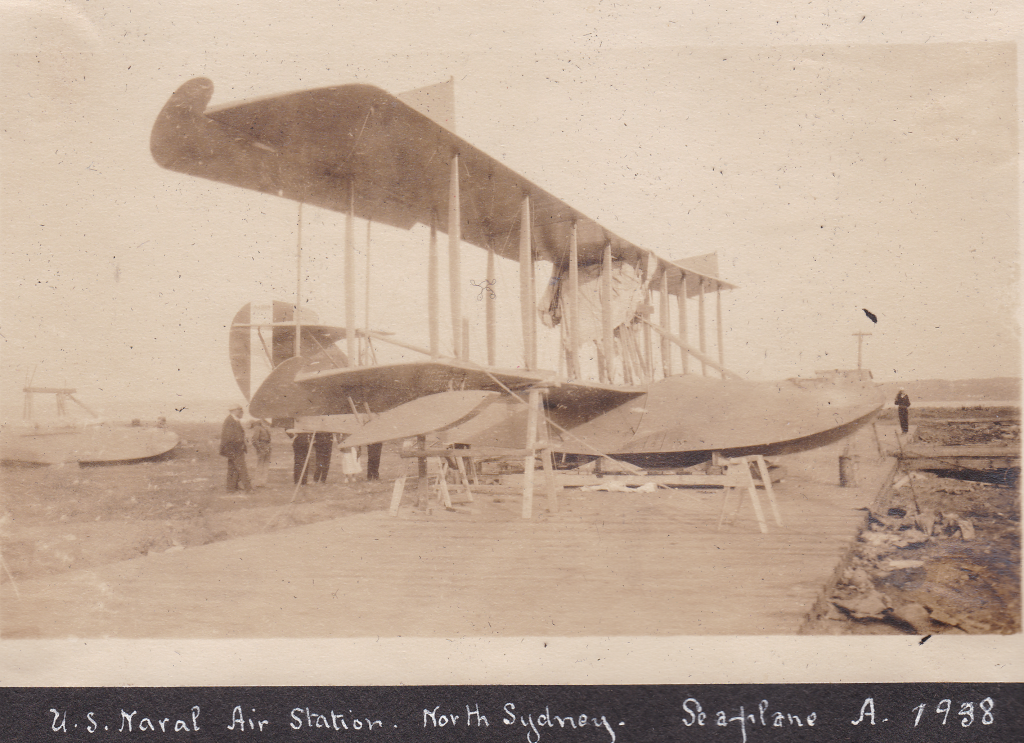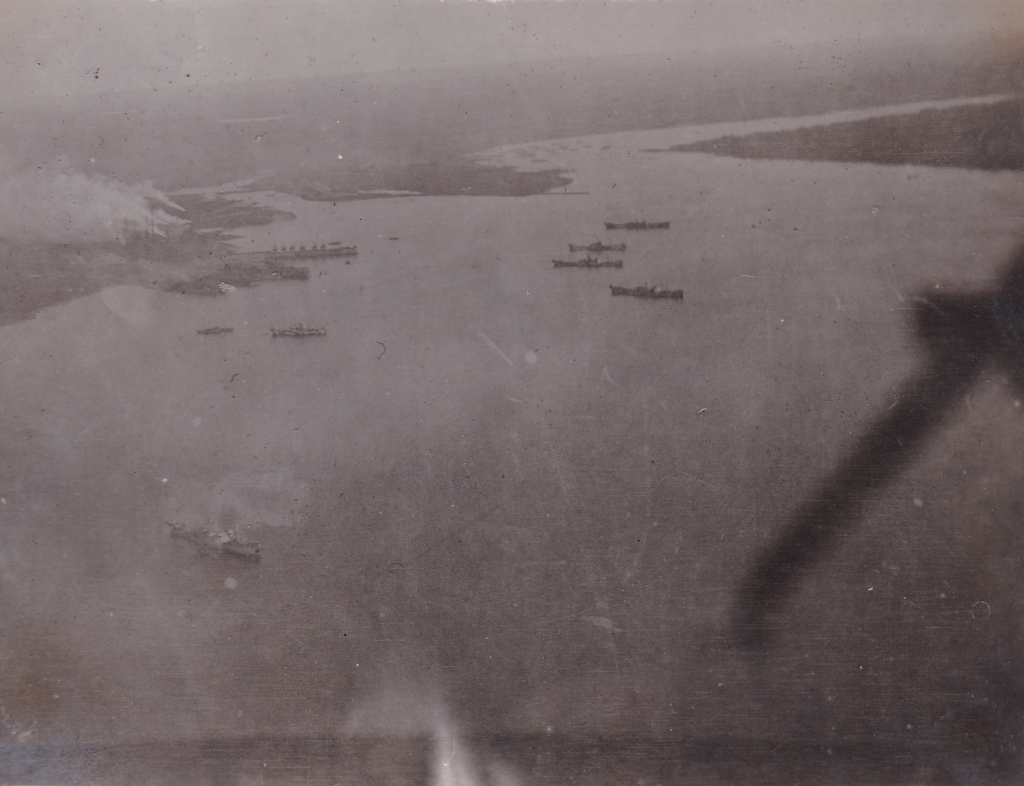Naval Air Station North Sydney
When the United States joined World War I in April 1917, one of their primary functions was to combat German submarine warfare. The U.S. military determined that since most submarines could be seen from an aircraft, establishing anti-submarine aviation bases was a logical approach to combat German U-boat attacks.
In June 1918, Canada approved the decision to establish a United States Naval Air Station in Sydney Harbour and Halifax Harbour. There were three others; one in Newfoundland and two in Panama.
The Sydney base would be located on the North Sydney side of the harbor, with a kite balloon and seaplane operations at Kelly’s Beach, where Munro Park is now located. The airstrip operations were based at Indian Point, also known as Indian Beach, located north-east of the current ferry terminal. Both of these points were located along the main road of the town.
Lieutenant Richard E. Byrd was given overall command of the United States Naval Air Station (USNAS) forces for Canada and Newfoundland. He received orders to establish a naval air station to serve Sydney Harbor and another to serve Halifax Harbor.
The Commanding Officer appointed to the United States Naval Air Station at North Sydney was First Lieutenant Robert Donohue of the United States Coast Guard (USCG). Lt. Donohue arrived in North Sydney on August 21, 1918, followed soon after by United States Navy troops and equipment. The primary function of the Naval Air Station was to protect merchant ships sailing within Canadian waters. As of 1916, the USCG was responsible for establishing and maintaining all aviation stations on American coasts. After the Americans entered World War I, the USCG assisted the United States Navy.
Two hundred and fifty men from the U.S Naval Reserve Flying Corps arrived in North Sydney in August and constructed a temporary camp at Indian Beach. The weather was horrible and the living conditions were inadequate. Officers were quartered in houses in town and the men lived in tents provided by the Canadian Army until barracks could be built. Rough sheds were constructed to protect valuable equipment and wooden runways for take-offs.
The airmen assembled the aircraft and test flights began on September 11, 1918. The first two operational flights took place on September 22 when two planes each flew for about 2.5 hours, covering convoy HS 56. By October, four aircraft were operational and two more had been delivered. The planes would track the progress of the convoys for hours, often tracking until the boat was 60 miles out to sea. This air support would help to locate U-boats, if they were in the vicinity.
The camp at Indian Beach was temporary and two barracks were quickly built on Kelly’s Beach, on a nearby hill just below the railroad tracks, along with a small workshop and storage buildings. Additionally, there was a seaplane hangar built near the back of the beach. When the war ended, the hangar was dismantled and the other buildings abandoned and boarded up.
The camp suffered an outbreak of “Spanish” Influenza in 1918 and several houses in town were rented so the American men could recover. Two men died from the epidemic, one of which was Lieutenant R.S. Johnson, a civil engineer in the United States Navy. With the War ended, most of the American servicemen left Sydney and the surrounding areas by the end of November 1918.
Naval Air Station in North Sydney and the Freemans
Within the Freeman Collection are a series of photos taken at the Naval Air Station in North Sydney in September 1918. They capture the flight of the first seaplane and other planes on the ground at Kelly’s Beach. There are also images of a seaplane accident in St. Peters and possibly one of the first aerial shots of Sydney Harbor. Like most residents of Cape Breton, the Freemans appear to have been captivated by the excitement of the seaplanes arriving and taking flight over Sydney Harbor. Imagine how exciting it would be, with air flight only two decades old, seeing a plane fly over your hometown.

